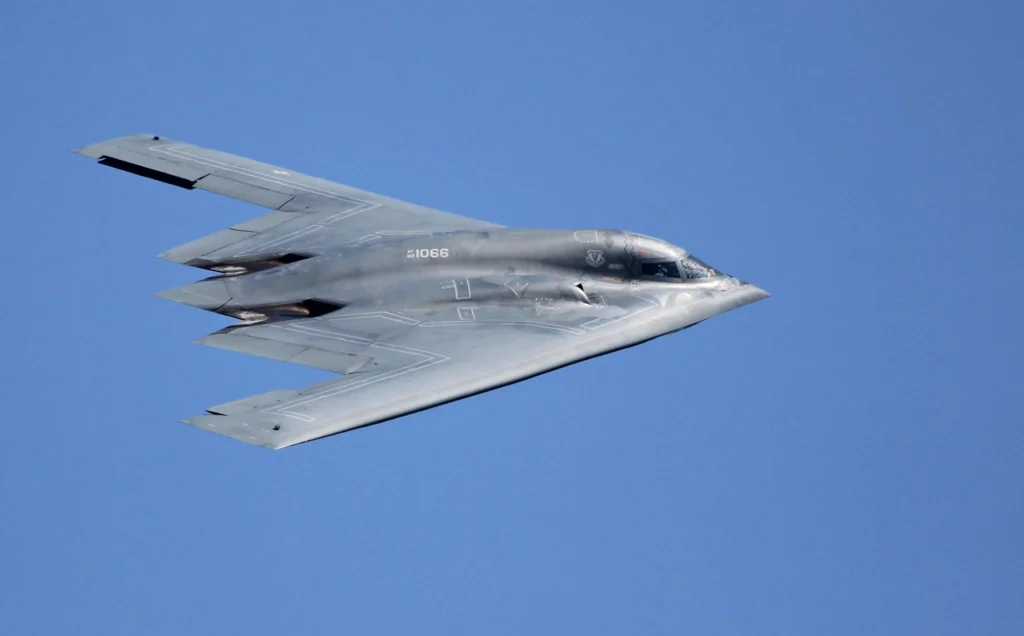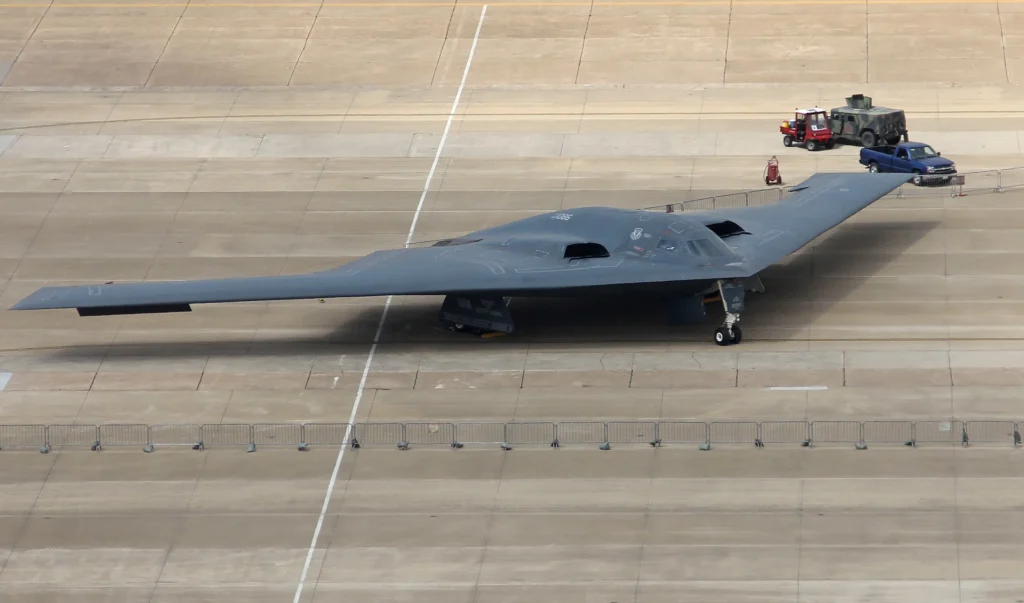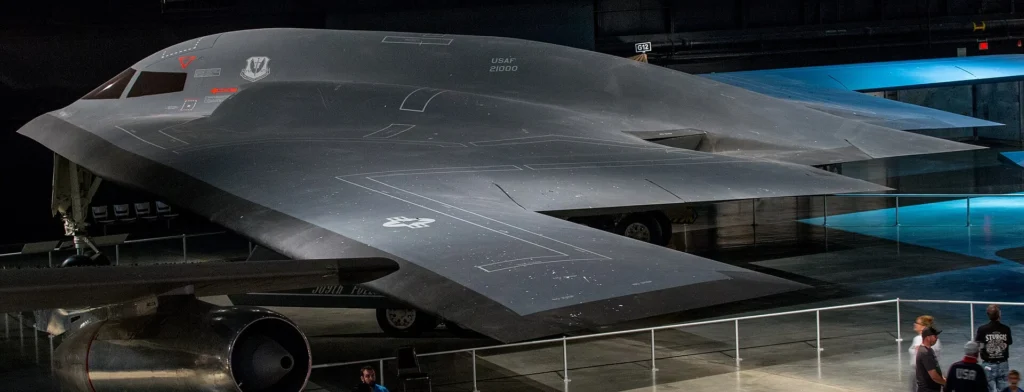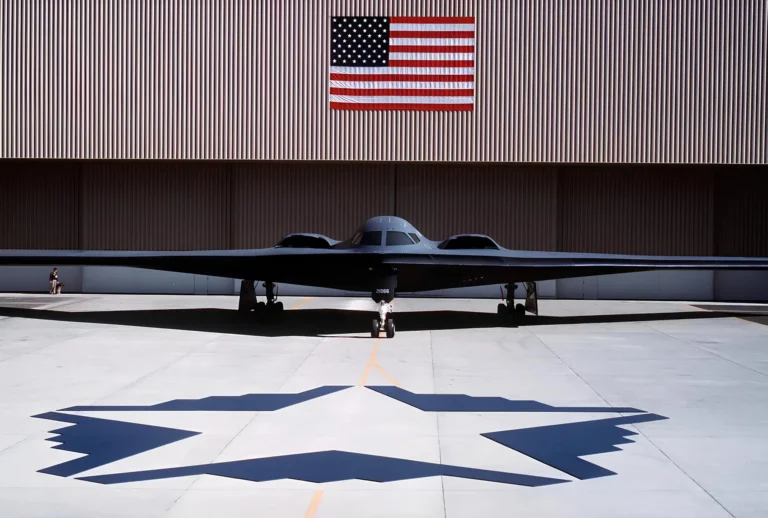WASHINGTON- In a covert, record-setting mission, B-2 Spirit stealth bombers took off from Whiteman AFB (SZL) to strike Iranian nuclear facilities without being detected. The bombers flew for over 33 hours, delivering 420,000 pounds of precision-guided ordnance deep into Iranian territory.
Part of Operation Midnight Hammer, the mission targeted key uranium enrichment plants with 30,000-pound GBU-57 “bunker busters” and cruise missiles launched from a US submarine. It was a feat of military aviation, deception, and endurance, executed by a small two-person crew per aircraft.

Strategic Stealth Strike
The B-2 Spirit, the US military’s only stealth nuclear-capable bomber, was central to the strike operation that caught Iran and the world by surprise.
This mission was years in the making, finalized under high secrecy with misleading public statements and decoy flights.
Seven B-2s, each armed with two bunker busters, flew east under strict radio silence, supported by a fleet of 125 aircraft, including refueling tankers and stealth fighters.
A separate group of decoy B-2s flew west toward a US Pacific base to distract global attention.
According to Defense News, this was all part of a calculated misdirection strategy, ensuring tactical surprise and operational success.
After nearly 18 hours in the air with midair refueling, the B-2s reached their launch points in the Eastern Mediterranean. Escorted by stealth fighters and reconnaissance aircraft, they flew over Lebanon, Syria, and Iraq, arriving at their Iranian targets without detection.

Operation Midnight Hammer
At precisely 2:10 AM local time in Tehran, the first of fourteen GBU-57 bombs was dropped on Fordo, Iran’s deeply buried uranium enrichment facility.
A second wave struck Natanz, another key nuclear site, while Isfahan was hit by more than two dozen Tomahawk cruise missiles launched from a submerged US submarine.
This marked the first-ever combat use of the GBU-57 bunker buster, designed to penetrate fortified underground targets before detonating.
US officials reported no successful engagement by Iranian defenses. Iran denied the extent of the damage and vowed retaliation.
Throughout the 33-hour operation, pilots rotated tasks like aerial refueling, weapons systems management, and navigation, all while managing fatigue and maintaining high situational awareness.

B-2 Bomber Pilots
The B-2’s two-person crew composition leaves no margin for error. Pilots must handle every mission-critical task, unlike the five-member crew of the B-52. Capt.
Chris “Thunder” Beck, a former B-52 pilot, emphasized the psychological preparation necessary for such missions. His experience underscores how a focus on the broader mission goal helps overcome fatigue.
Capt. Mike Haffner from the 13th Bomb Squadron explained that early mission productivity is key. This enables crew members to alternate rest periods without falling behind. Sleep management is vital, especially with a narrow margin for error during tasks like aerial refueling or weapons deployment.

Medical and Tactical Readiness
Pilots are supported by specialists from the 509th Medical Group, who help them adjust circadian rhythms, manage nutrition, and prepare for prolonged missions.
As Capt. Caleb James noted, even dietary and sleep adjustments ahead of deployment can influence performance. In rare cases, doctors may prescribe alertness medications.
Every detail is pre-coordinated, from who handles specific maneuvers to when naps are allowed, ensuring that both pilots are alert during critical phases.
Environmental cues such as daylight and darkness can further affect pilot fatigue levels, making hydration, diet, and rest essential.

US Bomber Operations
Gen. Dan Caine, Chairman of the Joint Chiefs of Staff, confirmed that this was the largest operational B-2 strike in US history, and the second-longest B-2 mission ever flown, surpassed only by post-9/11 operations.
The sortie involved:
- 14 GBU-57 bunker busters dropped by 7 B-2 bombers
- More than 24 Tomahawk cruise missiles from a US submarine
- 125 total aircraft, including bombers, refuelers, and escorts
Secretary of Defense Pete Hegseth noted that the B-2s “went in and out and back without the world knowing at all.” Despite the operation’s scale, only a few top officials in Washington and US Central Command (Tampa, FL) were aware of the plan in advance.
Stay tuned with us. Further, follow us on social media for the latest updates.
Join us on Telegram Group for the Latest Aviation Updates. Subsequently, follow us on Google News

